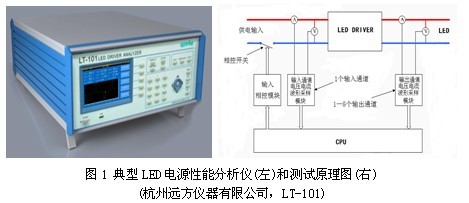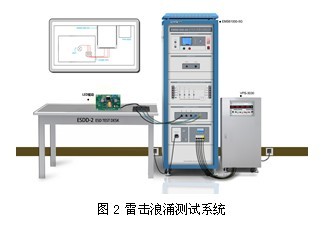0 Preface
LED drive power is one of the core components of LED lighting products. Its performance has an extremely important impact on the overall quality of lighting products: the efficiency of driving power supply is not high, the energy conversion ratio is low, which not only affects the lighting quality of lighting products, but also Bringing a large heat dissipation problem; driving failure is an important factor affecting the life of LED lighting products. Statistical analysis of 5400 ç› outdoor LED street lamp failure data in Elwood City, USA, 59% failure of LED street lamps and driving power supply and its control devices Related to failure. LED driver failure is related to many factors. Electromagnetic interference is an important aspect. Especially with the development of drive technology, the electronic integration of drive power is getting higher and higher, including not only the drive circuit, but also the LED electronic control or dimming circuit. . Therefore, the testing and evaluation of its electromagnetic compatibility characteristics (including electromagnetic interference and anti-interference) is very important, and it is an important factor to consider driving failure.
In recent years, dimming technology has been gradually applied in the field of LED lighting, especially in the field of commercial lighting. Dimmer Compatibility and Flicker performance have attracted the attention of many international standards organizations, such as the US Energy Star and the International Energy Agency's 4E plan, all of which propose dimming compatibility and strobe. Testing requirements. Therefore, the test and evaluation of the LED driver should be based on its own functional characteristics, and through comprehensive testing methods, it should be considered comprehensively.
1. LED drive power related standards
LED drive power standards include LED drive electrical performance, EMC electromagnetic compatibility and other features and testing. In April 2013, ENERGY STAR released the final draft of the ENERGY STAR® Program Requirements Product Specification for Lamps (Lamps FD), which included the testing of the ringing wave in the transient protection characteristics. The test standard is ANSI. /IEEE C62.41.2. At the same time, for dimmable LEDs, it is also required to measure the maximum value of the flicker indicator. The International Energy Agency (IEA) has previously proposed that the Flicker Index should not be greater than 0.3% for full-power street lighting. From the perspective of the standards and the development trend of international standards, LED drivers not only need to measure the basic electrical properties, EMC and other characteristics, but also need to investigate the transient protection characteristics and scintillation index and other characteristic parameters according to their applications.
2. System test plan for LED drive power
2.1 Electrical performance test
The electrical performance is the basic characteristic of LED driving. The performance of this performance is directly related to the light quality and energy efficiency conversion of LED. There are many parameters to be considered, including steady flow (voltage) range, power factor, startup time, and output overvoltage ( Flow) protection value, input surge current, and output current (voltage) ripple. Such a large number of electrical performance indicators, generally need to use a variety of testing equipment combined measurement, the operation is very cumbersome. Figure 1 (left) is a typical LED power performance analyzer (LT-101), Figure 1 (right) is the measurement schematic of the LT-101 LED driver, and the LT-101 can simultaneously test the input and output of the LED driver. Features, one instrument can meet all measurement content, can fully meet the standard requirements, and the LT-101 also has output ripple measurement and harmonic analysis.

2.2 Electromagnetic compatibility testing
The EMC (Electromagnetic Compatibility) of LED driving power sources includes electromagnetic interference (EMI) and electromagnetic sensitivity (EMS). EMI (Electromagnetic Interference) requires that the electromagnetic interference generated by the LED drive power system during the normal operation of the environment and other things (including equipment, systems, people, animals and plants) should not exceed certain limits. EMS (Electromagnetic Susceptibility) is electromagnetic sensitivity (immunity resistance). This characteristic requires the LED driving power system itself to have stable running performance under electromagnetic disturbance, such as the ability to resist lightning, static electricity, ringing waves and the like. For different EMC characteristics, the standard test requirements are different, and you must select your own professional test plan for testing. The following is a description of the EMS performance tests that are important for LED driver power supplies and that are most likely to cause failure.
2.2.2 Surge impact detection
Natural lightning strikes, power system switching, equipment grounding grids or short circuits between grounding systems can cause surges in the LED drive in this environment, which can lead to equipment failure and damage. Therefore, the standard GB/T 17626.5/IEC61000-4-5 has clearly defined the anti-surge impact performance evaluation of electrical equipment. The lightning surge test system for LED drive power is shown in Figure 3. The main equipment is the remote EMS61000-5G fully automatic multi-function lightning surge generator, which superimposes a surge spike on the 220V mains, with a maximum value of 10kV. The rise time and duration of the spikes were 1.2 μs/50 μs.
